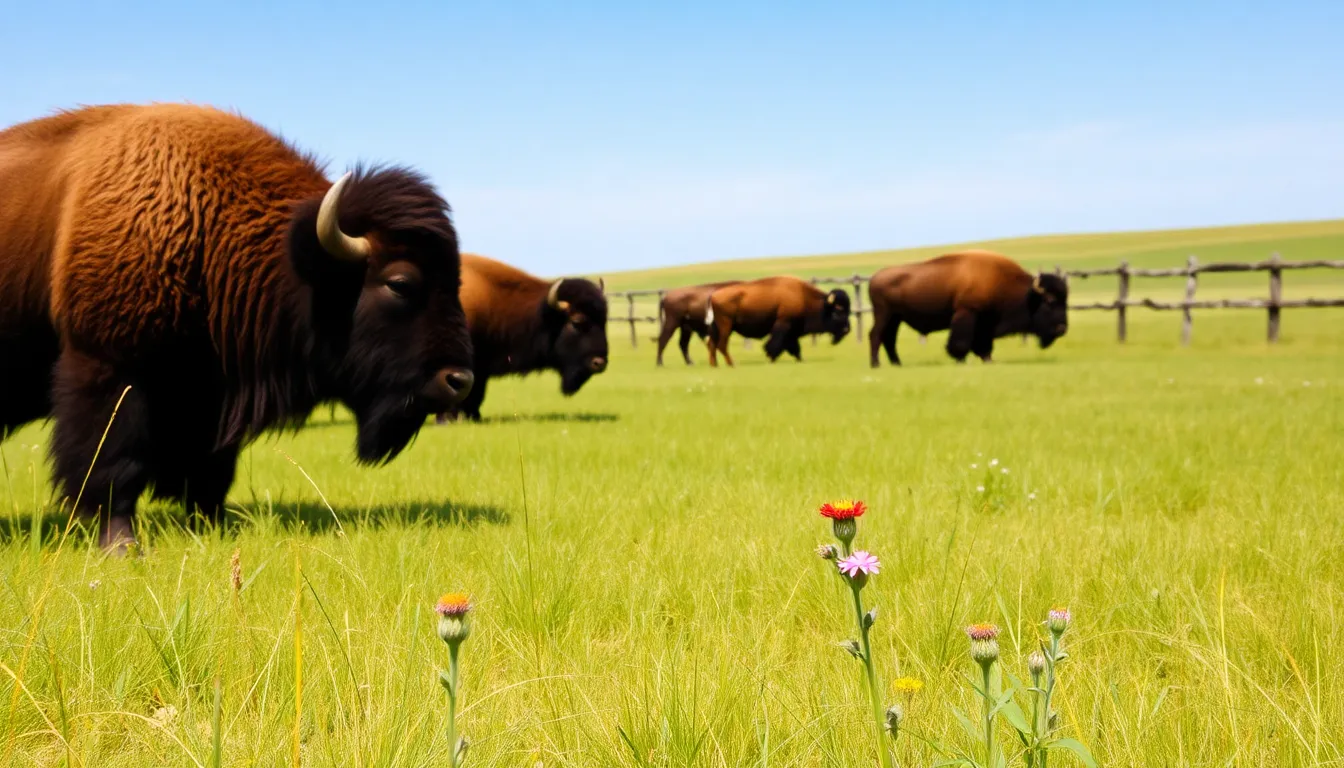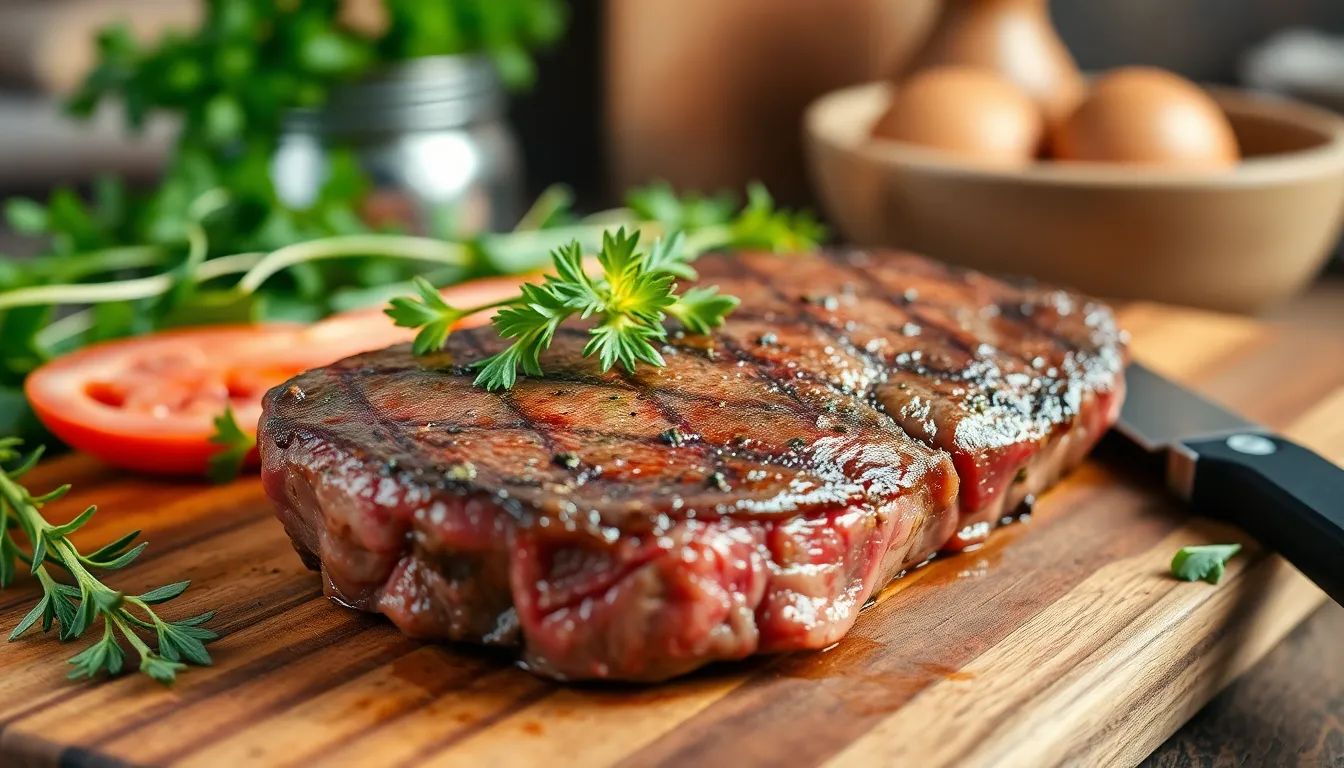
Bison vs Beef Nutrition: Which Meat Reigns Supreme for Your Health?
When it comes to choosing between bison and beef, the battle isn’t just about taste; it’s a nutritional showdown that could leave your taste buds and waistline cheering for either side. Bison, the majestic beast of the plains, struts in with a leaner profile and a nutrient punch that might just make beef feel a bit jealous. But don’t count beef out just yet—it’s been the crowd favorite for ages and has its own set of delicious advantages.
In this culinary clash, it’s not just about who’s got the better flavor; it’s about what’s lurking beneath the surface. With protein-packed bison and the classic beefy goodness, the stakes are high. So grab your forks and get ready to dive into the nutritional nitty-gritty that’ll help you decide whether to go wild with bison or stick with the tried-and-true beef.
Bison VS Beef Nutrition
Understanding the differences between bison and beef nutrition reveals important insights for health-conscious consumers. Both meats offer unique benefits, influencing dietary choices based on various factors.
Bison Nutritional Overview
Bison provides a lean protein source, containing around 22 grams of protein per 3-ounce serving. This meat typically has about 124 calories, making it a low-calorie option. Furthermore, bison contains lower fat levels—roughly 2 grams of fat and only 1 gram of saturated fat per serving. Rich in vitamins, bison is an excellent source of Vitamin B12 and iron, which are essential for energy production and red blood cell formation. Additionally, its higher omega-3 fatty acid content enhances heart health, promoting overall wellness.
Beef Nutritional Overview
Beef offers a robust flavor and slightly higher calories, averaging around 250 calories per 3-ounce serving. Protein content is notable as it provides approximately 26 grams, helping muscle maintenance and repair. Fat content in beef varies, but it generally contains about 15 grams, including 6 grams of saturated fat. Vitamin B12 also features prominently in beef, supporting neurological function. Moreover, beef is a valuable source of zinc, essential for immune function and cellular metabolism, making it a staple in many diets.
Health Benefits of Bison

Bison boasts an array of health benefits, making it an attractive option for those seeking nutritious alternatives to beef. High in protein and lower in calories, bison supports a healthy diet while providing essential nutrients.
Lean Protein Content
Bison stands out for its impressive protein content, offering around 22 grams of protein per 3-ounce serving. This significant amount contributes to muscle growth and repair, making it beneficial for active individuals. It provides a complete protein source, containing all essential amino acids necessary for optimal health. Many athletes and fitness enthusiasts choose bison to meet their dietary protein needs without excessive calorie intake. Increased protein consumption can aid in weight management, fostering a feeling of fullness and reducing overall caloric intake.
Lower Fat Levels
Bison contains lower fat levels compared to beef, which appeals to health-conscious consumers. A 3-ounce serving of bison typically has about 2.5 grams of total fat, while beef can exceed 15 grams. This reduced fat content helps lower the risk of heart disease by minimizing saturated fat intake. Additionally, bison has higher concentrations of omega-3 fatty acids, which contribute to heart health and overall well-being. Choosing bison can support healthier cholesterol levels, enhancing cardiovascular health. The lean nature of bison fits well in a balanced diet focused on wellness and longevity.
Health Benefits of Beef
Beef offers numerous health benefits, making it a staple in many diets. Nutritionally, beef provides substantial amounts of essential vitamins and minerals.
Rich in Vitamins and Minerals
Beef contains significant levels of zinc, which plays a crucial role in immune function. Additionally, Vitamin B12 found in beef supports neurological health and red blood cell formation. Iron, often abundant in beef, contributes to energy levels and aids in oxygen transport throughout the body. Phosphorus exists in beef, promoting strong bones and teeth. Furthermore, beef includes selenium that acts as an antioxidant, helping protect cells from damage.
Caloric Density
Caloric density in beef can influence dietary choices. About 26 grams of protein exist in a 3-ounce serving of beef, making it an excellent protein source. Even though beef has higher calories at approximately 250 per serving, its richness in nutrients can justify this energy content. While some may view the fat levels with concern, healthy fats contribute to satiety, helping to keep an individual full. Moderation in consumption alongside a balanced diet can allow individuals to enjoy beef’s nutrition without excessive caloric intake.
Environmental Impact
Bison and beef farming significantly impact the environment. Both practices impact land use, greenhouse gas emissions, and biodiversity.
Bison Farming Practices
Bison farming emphasizes sustainable practices. Pastures often include native grasslands, which support local ecosystems and promote biodiversity. Lower stocking densities lead to reduced soil erosion and less land degradation. This approach improves carbon sequestration, helping combat climate change. Furthermore, bison require fewer resources than cattle, producing less greenhouse gas emissions per pound of meat. These factors make bison a more environmentally friendly option.
Beef Farming Practices
Beef farming typically has a larger environmental footprint. Conventional operations often involve intensive grazing and feedlot systems, leading to higher greenhouse gas emissions. The use of grain-based feed contributes to deforestation and habitat loss. However, some beef farms adopt regenerative practices to mitigate environmental impact. These farms use rotational grazing techniques that enhance soil health and promote carbon capture. Sustainable beef production can balance environmental concerns with the demand for beef products.
Conclusion
Choosing between bison and beef involves weighing nutritional benefits and environmental impacts. Bison stands out for its lean protein and heart-healthy omega-3 fatty acids while being more sustainable. Beef offers a rich source of essential vitamins and minerals that support overall health.
Both options have their merits and can fit into a balanced diet when consumed in moderation. By considering personal health goals and environmental concerns, individuals can make informed decisions that align with their dietary preferences. Ultimately, whether one opts for bison or beef, both can contribute to a nutritious and fulfilling meal.



